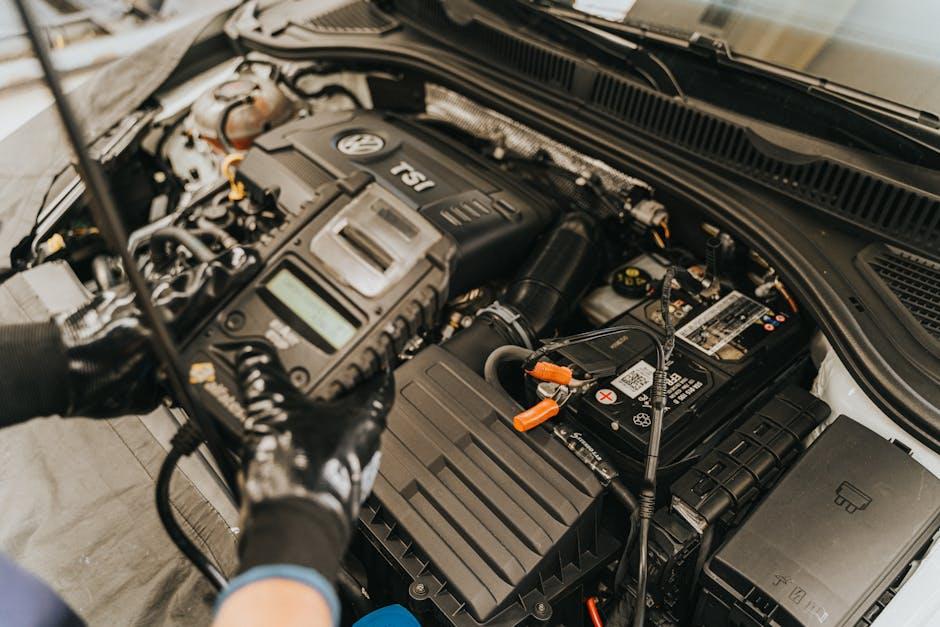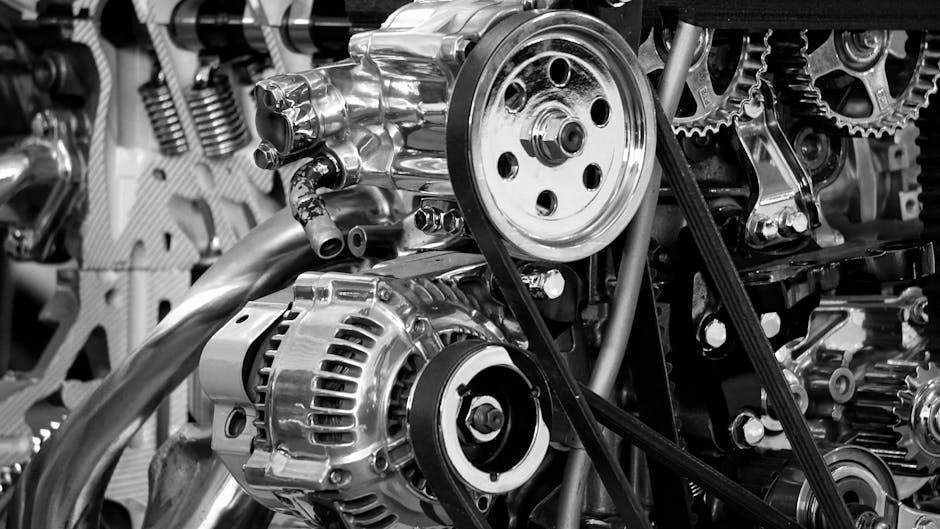Beneath the sleek exterior of every modern car lies a complex web of electrical systems that bring life to its functions—powering everything from your headlights to the essential sensors that keep you safe on the road. Yet, as advanced as these systems are, they are not immune to glitches and failures. Understanding the common electrical issues that plague cars can save drivers from unexpected breakdowns and costly repairs. In this article, we’ll explore the usual suspects behind car electrical problems, shedding light on how they happen and what signs to watch for, so you can keep your vehicle running smoothly and stay connected to the road ahead.
Table of Contents
- Understanding the Root Causes of Car Electrical Failures
- Identifying Symptoms of a Failing Battery and Alternator
- Diagnosing Wiring Problems and Loose Connections
- The Role of Fuses and Relays in Preventing Electrical Troubles
- Practical Tips for Maintaining Your Vehicle’s Electrical System
- When to Seek Professional Help for Complex Electrical Issues
- Q&A
- The Conclusion

Understanding the Root Causes of Car Electrical Failures
At the heart of many car electrical issues lies a complex web of interconnected components, each vulnerable to a unique set of problems. One major contributor is corrosion, which can slowly eat away at wiring and connectors, leading to intermittent faults or complete disconnections. Additionally, battery age and health profoundly affect the electrical system’s stability, as a weakened battery may not supply consistent power, causing malfunctions or triggering warning lights. Wear and tear on alternators and fuses also play a significant role in common failures, often overlooked until symptoms escalate.
Moreover, modern vehicles rely heavily on sophisticated computer systems that can be susceptible to software bugs or electrical surges. Damaged or frayed wiring from rodents or physical abrasion can create short circuits or open circuits, disrupting the flow of electricity essential for critical functions. Understanding the root causes means keeping an eye on the vehicle’s environmental exposure, maintenance history, and signs of electrical strain. Take a look at the breakdown below highlighting typical failure points:
| Common Cause | Effect | Symptoms |
|---|---|---|
| Corrosion | Poor connectivity | Flickering lights, hard starts |
| Battery degradation | Low power supply | Dashboard warnings, dim lighting |
| Wiring damage | Short circuits | Blown fuses, system failure |
| Faulty alternator | Inconsistent charging | Dead battery, warning chimes |

Identifying Symptoms of a Failing Battery and Alternator
When your car begins to exhibit electrical quirks, pinpointing whether the battery or alternator is at fault can save you time and money. A failing battery often reveals itself through slow engine cranking or a complete failure to start, especially in cold weather. You might notice the dashboard lights dimming or flickering, accompanied by an unusual smell reminiscent of sulfur or rotten eggs. Common signs include:
- Dim headlights and interior lights
- Dashboard warning lights, especially the battery indicator
- Frequent jump-starts required
On the other hand, an alternator problem tends to manifest as erratic electrical behavior while driving. If your radio cuts out frequently, your car stalls unexpectedly, or the voltage gauge shows irregular readings, the alternator might be struggling to keep the battery charged. Other symptoms include a growling or whining noise coming from under the hood. The table below summarizes typical symptoms to help differentiate between both issues:
| Symptom | Battery Issue | Alternator Issue |
|---|---|---|
| Engine Cranking | Slow or no start | Usually starts fine |
| Dashboard Lights | Dim or flickering | Intermittent brightness |
| Electrical Accessories | Fail to operate or dim | Cut out randomly |
| Noises | None typical | Growling or whining |

Diagnosing Wiring Problems and Loose Connections
Electrical gremlins in your vehicle often originate from misbehaving wires or connections that have eaten through their secure hold. Before diving deep into complex diagnostics, it’s essential to undertake a humble visual and tactile inspection. Start by gently shaking and tugging wires to detect any looseness or corrosion around connectors and terminals. Look out for brittle insulation, discoloration, or burnt smells—these subtle signs often herald underlying faults. Using a multimeter to test continuity and voltage drop across suspicious segments can offer precise insights into hidden faults that evade the naked eye.
In many cases, symptoms such as flickering lights or intermittent power loss stem from something as simple as a loose ground or a terminal jammed with oxidation. Below is a quick checklist to help organize your troubleshooting efforts:
- Check Grounds: Ensure all ground wires are tightly fastened to clean, rust-free metal surfaces.
- Inspect Connectors: Pull apart and clean connectors, removing any corrosion or grime.
- Tighten Terminals: Secure all terminal screws and clips firmly to avoid poor contact.
- Use Dielectric Grease: Apply to connectors to repel moisture and prevent corrosion.
| Symptom | Likely Cause | Recommended Action |
|---|---|---|
| Dashboard flickering | Loose dashboard wiring harness | Secure connectors, test with multimeter |
| Intermittent headlight | Corroded headlight terminal | Clean terminal, apply dielectric grease |
| Engine cranks but won’t start | Faulty ignition wiring | Check and tighten ignition circuit connections |

The Role of Fuses and Relays in Preventing Electrical Troubles
In every vehicle, fuses and relays serve as silent guardians of the electrical system, diligently protecting circuits from damage caused by overloads or short circuits. Fuses act as one-time sacrificial devices; when a surge of current flows beyond safe levels, the fuse blade melts, breaking the circuit and preventing further harm. Relays, on the other hand, are electrically operated switches that control high-current circuits with a low-current signal, ensuring efficient power distribution without putting undue stress on delicate wiring. Together, they block electrical faults before they escalate into more serious issues that could lead to costly repairs or complete vehicle breakdown.
Understanding their locations and functions can empower car owners to troubleshoot minor electrical problems without immediate professional help. Below is a handy reference table outlining common fuse and relay types found in most vehicles and their typical roles:
| Component | Primary Function | Common Issues Prevented |
|---|---|---|
| Fuse | Protects individual electrical circuits | Blown lights, dead cigarette lighter |
| Relay | Controls high-current loads via low-current switch | Malfunctioning fuel pump, non-working starter motor |

Practical Tips for Maintaining Your Vehicle’s Electrical System
Regular care can significantly extend the life of your vehicle’s electrical components. Start by keeping battery terminals clean and free from corrosion, as this ensures a solid electrical connection. Use a mixture of baking soda and water to gently scrub the terminals, and apply a protective spray afterward to prevent future buildup. Additionally, routinely inspect your wiring harnesses for signs of wear or damage—frayed wiring can cause shorts or intermittent electrical failures. Keeping your fuse box clean and dry can also prevent erratic electrical issues.
Incorporate these simple habits into your maintenance routine:
- Check battery fluid levels monthly (if applicable) and top up with distilled water.
- Ensure all lights function properly before driving, replacing burnt-out bulbs promptly.
- Use a multimeter to test electrical circuits if you notice irregular behavior such as flickering headlights or dashboard warnings.
- Avoid overloading circuits with aftermarket accessories without professional wiring assistance.
| Maintenance Task | Frequency | Tools Needed |
|---|---|---|
| Battery Terminal Cleaning | Every 3 Months | Brush, Baking Soda |
| Wiring Inspection | Every 6 Months | Visual Check, Multimeter |
| Fuse Box Cleaning | Annually | Compressed Air, Soft Cloth |
| Bulb Replacement | As Needed | Replacement Bulbs, Screwdriver |

When to Seek Professional Help for Complex Electrical Issues
Electrical systems in modern vehicles are intricate, often interwoven with various modules and sensors that require specialized diagnostic tools to accurately identify faults. If you notice persistent issues such as flickering dashboard lights, multiple fuse blowouts, or a battery that drains rapidly despite normal use, it’s a clear indication that the problem might be beyond a simple battery replacement or fuse swap. Attempting to fix these without professional expertise can lead to further damage or safety risks, as hidden shorts or faulty wiring can ignite fires or disable critical vehicle functions.
Consider seeking expert assistance if you encounter:
- Unusual smells (burning plastic or rubber) inside the car cabin
- Intermittent power loss to multiple systems (radio, lights, windows)
- Repeated warning lights appearing after a jump-start or battery change
- Non-functioning airbags, ABS, or other safety-related electrical components
Professional technicians harness advanced scanning tools and knowledge of manufacturer-specific wiring diagrams, allowing them to pinpoint the exact cause swiftly and efficiently. Investing in professional diagnostics not only saves time and money in the long run but ensures that your vehicle’s electrical system is restored safely and reliably.
| Symptom | Possible Cause | Recommended Action |
|---|---|---|
| Battery drains overnight | Parasitic electrical draw | Seek professional battery draw test |
| Dashboard flickers | Loose or corroded wiring | Have wiring inspected & repaired |
| Multiple fuse failure | Short circuit in wiring harness | Professional circuit tracing required |
Q&A
Q&A: Navigating Common Car Electrical Issues
Q1: What are some of the most common electrical problems in cars?
A1: The usual suspects include a dead or weak battery, faulty alternators, blown fuses, malfunctioning starters, corroded or loose wiring, and issues with car lights or sensors. Each plays a vital role in keeping your vehicle’s electrical system humming smoothly.
Q2: How can I tell if my car battery is failing?
A2: Signs of a failing battery include slow engine crank, dim headlights, and warning lights on the dashboard. If your car struggles to start or the electronics falter, it’s time to test or replace the battery.
Q3: What role does the alternator play in car electrical health?
A3: Think of the alternator as the battery’s best friend. It charges the battery while the engine runs and powers the electrical systems. A faulty alternator can cause the battery to drain quickly, leading to stalls or electrical malfunctions.
Q4: Why do car fuses blow, and how can I fix them?
A4: Fuses are the system’s protectors—they blow when there’s an electrical surge to prevent damage. Frequent fuse blowouts might indicate a short circuit or faulty wiring. Replacing the fuse is simple, but investigating the cause is key.
Q5: Can electrical issues affect a car’s safety features?
A5: Absolutely. Modern cars rely heavily on electrical components for airbags, anti-lock braking systems, and traction control. Electrical glitches could compromise these features, so prompt diagnosis and repair are essential.
Q6: Are DIY fixes advisable for car electrical problems?
A6: Minor tasks like replacing a fuse or battery can be handled at home with care. However, complex issues involving wiring or sensors often require professional tools and expertise to avoid further damage.
Q7: How can I prevent electrical issues in my car?
A7: Regular maintenance is your best defense: keep battery terminals clean, avoid leaving electronics on when the engine is off, check wiring for wear, and have the electrical system inspected during routine service.
Q8: When should I see a professional for my car’s electrical problems?
A8: If you encounter persistent starting troubles, flickering lights, unexpected warning signals, or any electrical component behaving oddly, it’s wise to consult a professional mechanic promptly to diagnose and fix the root cause.
The Conclusion
Navigating the twists and turns of car electrical issues might seem daunting, but understanding the common culprits can turn roadside worries into manageable tasks. From flickering lights to stubborn starters, each spark and circuit tells a story about your vehicle’s health. By staying informed and proactive, you can keep your car’s electrical system humming smoothly, ensuring every journey is powered with confidence. After all, a well-maintained connection is the key to keeping your car—and your peace of mind—fully charged.

